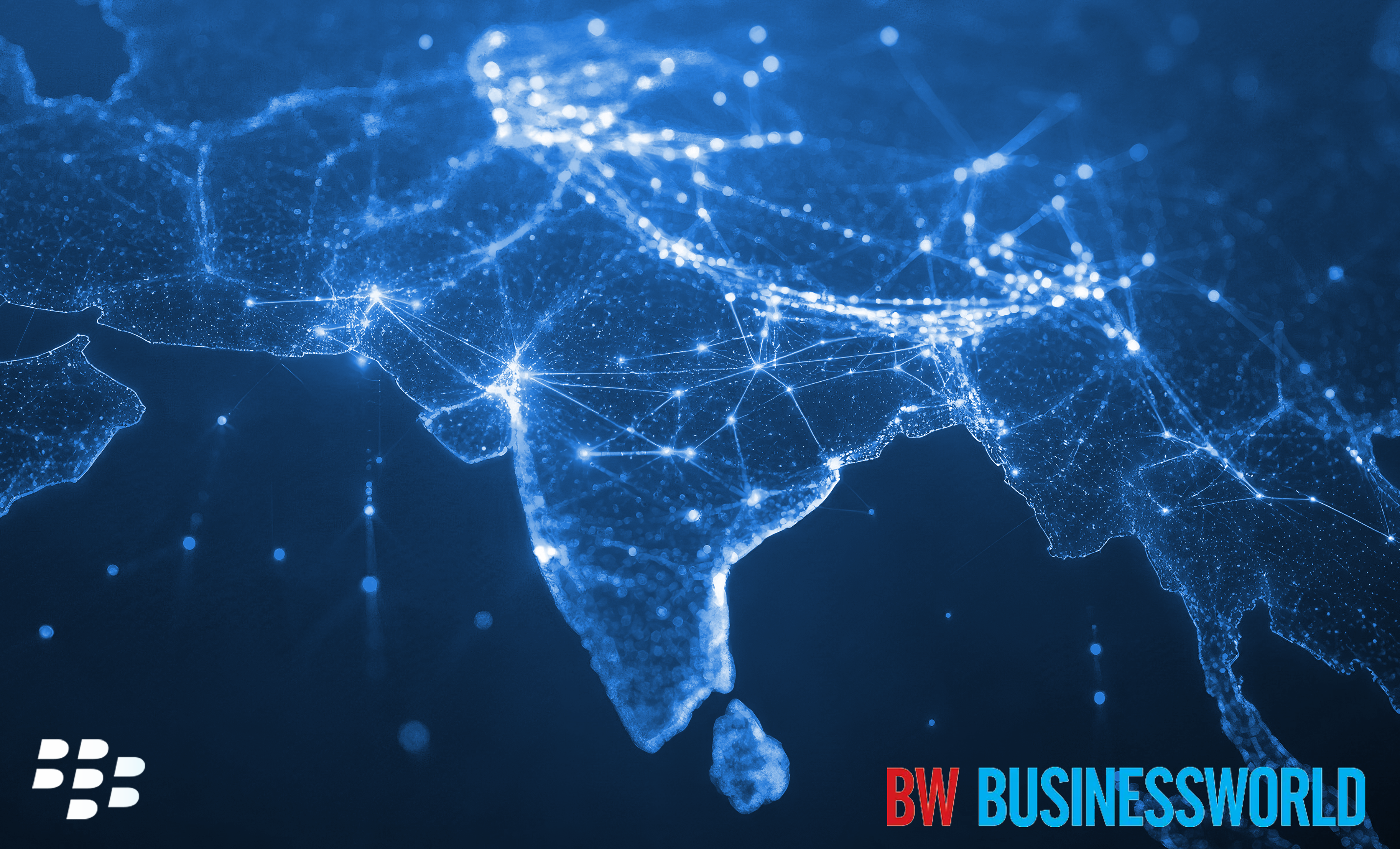Reprinted with permission from BW Businessworld.
During his India visit, BlackBerry CEO John Giamatteo exclusively spoke with BW Businessworld's Rohit Chintapali and shared his views on India’s growing importance in times of global economic slowdown. He also discussed the company’s strategy for tapping into India’s evolving ecosystem, the expanding role of security solutions and opportunities beyond its flagship QNX platform. The CEO also addressed the shifting business dynamics in global markets as new geopolitical and tariff narratives continue to unfold.
How does Blackberry’s India approach compare to other global companies, many of which focus mainly on R&D here?
We have a broader set of activities in India. It’s not just a valuable R&D where we leverage local talent. We also pursue commercial success through various initiatives. About 10 years ago, we moved away from handsets toward software and services, making organic investments and acquiring over 20 companies globally with different technologies and capabilities. Over the past 15–16 months, we stepped back to assess what’s working, where to double down and where to pull back. We honed in on two focused business units: one is QNX (software solutions for OEMs), our operating system for motor vehicles, robotics, medical devices, railways and adjacent markets. The other is our Secure Communications business, providing emergency notifications, device protection and the highest level of encryption for voice, data and video. These solutions serve governments, large enterprises, and banks globally and we pursue these activities in India as well. There are also significant initiatives that we have underway in our research and development labs in Hyderabad, which is another facet of our participation in the Indian economy.
How is the India market looking for you as BlackBerry looks to make a commercial push here?
We have a really strong position with our QNX business in India. QNX is essentially the operating system that acts as the brain of the car, handling everything from simple tasks like infotainment and window controls to more sophisticated features like digital cockpits, ADAS, and assisted cruise control, braking, and transmission systems. With cars increasingly becoming software-driven, we have established strong relationships with local manufacturers like Tata, Mahindra, Hyundai and Suzuki. As India’s economy and middle class grow over the next four to five years, and as vehicles become more sophisticated with more SoCs and cores, we are very well positioned to capitalise on that growth.
We have a strong market share in the high-end segment, and as that segment expands, it plays directly to our strengths. Beyond automotive, we are equally excited about adjacent markets like railway, medical devices, robotics and industrial design, where QNX also plays a critical role. As more software gets embedded across industries, it aligns perfectly with our strategy and investments, creating tremendous opportunities for us in the Indian market.
Beyond QNX, what opportunities are you seeing in India? Given that security has been a major strength for BlackBerry, how does it fit into your India strategy going forward? Also, how do you see yourself investing more here?
Given the global trends and vulnerabilities today, we believe our secure communications portfolio is a timely and valuable fit. For example, the Salt Typhoon vulnerability last year, where US telecom infrastructures were bypassed, pointed to the critical need for secure communications. Similarly, in regions like India and Malaysia, natural disasters and crises require reliable communication to ensure public safety and coordinate responses. With more people using commercial tools like Signal and WhatsApp for government communications, the need for secure systems is clear.
As we expand our presence in India, we see an opportunity to introduce our capabilities to serve the Indian government, especially in the areas of device security, secure conversations, and critical notifications. This is a major part of our global strategy, where we engage with governments worldwide to educate them on how our solutions can enhance security. We plan to continue this effort in India as well.
"We believe India’s broader ecosystem will strengthen BlackBerry. Few markets today are growing globally, even China is slowing down. India’s GDP is projected to grow at 5-7 per cent annually for the next 10-15 years. This growth creates opportunities for the government, people and companies like ours to engage in and benefit from the ecosystem."
BlackBerry has significant exposure to the US federal government. Given recent funding cuts and tariff pressures, along with challenges in the banking sector over the past few years, what is your reading of the current environment?
We actually have a well-diversified business with various governments. We do a lot of business with the US government, but also have strong relationships with the Canadian and German governments. Recently, in Asia Pacific, we formed a strategic partnership with the Malaysian government, bringing our full secure communications portfolio and building a cybersecurity centre of excellence to train government employees, educational institutions and industry on best practices for national security.
Regarding the US government, while there’s a lot going on, we stay plugged in through government relations, sales and services to position ourselves well during turbulent times. Our offerings — like the 'BlackBerry AtHoc' critical events management platform adopted by the Marines, Air Force, Navy and Department of Homeland Security are mission-critical. Whether for natural disasters, war, conflict or special initiatives, these communications are essential. Even as the government seeks to cut costs and streamline operations, they tread carefully around mission-critical services like ours because they simply can’t risk those systems failing to save a few dollars.
Could you share your perspective on how client spending for this fiscal is looking like? After reporting quarterly results in April with the ongoing market turmoil, many major IT companies are signaling a muted outlook. Are you seeing clients hold back on spending?
A few weeks ago, we updated the Wall Street with our financial results for the previous fiscal year and our outlook for the next. We communicated to Wall Street a projected revenue range of USD 504–534 million, EBITDA guidance of USD 69–84 million (around 15 per cent EBITDA margins and projected cash generation of about USD 35 million. We’re now six weeks into the new fiscal year and see no reason to change that guidance, though we are closely monitoring global activities — tariffs, Canada will be picking its new prime minister, Germany’s new chancellor and other geopolitical turbulence. For now, we continue to stand by the guidance we provided.

